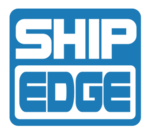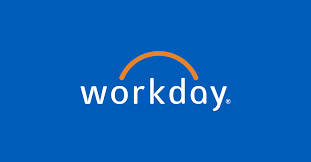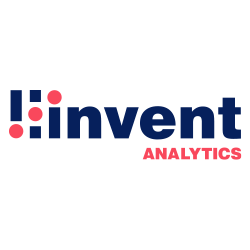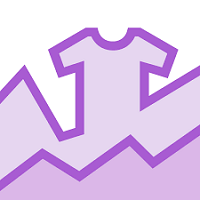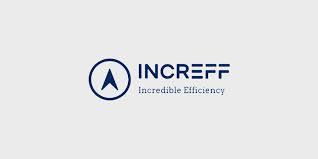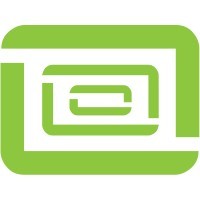What Is Demand Planning Software?
Demand planning software, often known as inventory forecasting software, is a sophisticated tool that helps organizations effectively forecast consumer demand for their products or services. This enables businesses to optimize their production, procurement, and inventory levels, resulting in greater efficiency, lower costs, and higher customer satisfaction.
Demand planning software uses previous sales data, industry trends, and consumer insights to anticipate future demand for a product or service. It provides accurate and actionable demand estimates by accounting for seasonality, promotions, market circumstances, and other external factors. One of the primary advantages of employing demand planning software is the ability to lower inventory carrying costs by optimizing stock levels and reducing stockouts.
This allows firms to prevent excess inventory and associated costs while yet guaranteeing that they have enough products to meet client demand. Furthermore, demand planning software enables businesses to anticipate supply chain interruptions by changing production schedules and procurement plans.
This level of preemptive planning can considerably reduce the impact of unanticipated events like shipping delays or unexpected demand shifts. Another advantage of demand planning software is its potential to promote collaboration and communication among a company's various departments, including sales, marketing, operations, and finance.
With a centralized and automated platform, all stakeholders have access to the same precise demand projections, resulting in better decision-making and more efficient operations. Most demand planning software also includes advanced tools like scenario planning, simulations, and "what-if" analysis, which allow firms to test various demand scenarios and assess their possible impact on operations.
This allows businesses to be more adaptable and responsive to changing market conditions, giving them a competitive advantage. Demand planning software also connects with other corporate systems like ERP, CRM, and POS, allowing for a seamless flow of data and insights across several platforms. This connection not only improves efficiency but also eliminates manual errors, reducing forecasting time and effort.
What Are The Recent Trends In Demand Planning Software?
The demand planning software industry is always expanding, with new features and technologies offered to satisfy the changing needs of enterprises. In this section, we'll go over some of the latest trends in demand planning software that buyers should be aware of when making purchasing selections.
1. Integration With AI And Machine Learning (ML): One of the most important advancements in demand planning software is the incorporation of AI and ML capabilities. These technologies can use previous data and patterns to give more precise forecasting and demand planning. This enables organizations to make better judgments and respond to changing market conditions more rapidly.
2. Cloud-Based Solutions: Another popular trend is the adoption of cloud-based demand planning tools. These solutions provide greater flexibility, scalability, and cost-effectiveness than traditional on-premise software. Cloud-based software allows businesses to access their data and tools from anywhere, at any time, making collaboration and real-time decision-making easier.
3. Demand Sensing: Demand sensing is a method that leverages real-time data from a variety of sources, including point-of-sale systems, social media, and weather reports, to better estimate demand. This approach is gaining traction as organizations attempt to become more responsive to client demand while lowering inventory expenses.
4. Mobile Applications: Many demand planning software companies are creating mobile applications to help organizations access their data and insights on the go. These programs enable users to manage and monitor demand, collaborate with teammates, and receive real-time warnings and notifications.
5. Advanced Visualization And Reporting: In today's fast-paced corporate climate, decision-makers require clear and simple visualizations to interpret complicated data. Demand planning software now includes extensive visualization and reporting tools, allowing firms to evaluate data more effectively and make data-driven decisions.
6. Predictive Analytics: Another important innovation in demand planning software is the use of predictive analytics. This capability enables organizations to estimate future demand using historical data, market trends, and other external factors. Predictive analytics can help businesses anticipate changes in demand and alter their tactics accordingly.
Benefits of Using Demand Planning Software
Demand planning software is an invaluable resource for organizations seeking to optimize their supply chain and increase forecasting accuracy. This program provides numerous benefits to organizations of all sizes, including the ability to optimize inventory levels, cut expenses, and boost productivity. In this buyer's guide, we'll look at the top five benefits of adopting demand planning software.
1. Improved Forecasting Accuracy: One of the primary advantages of adopting demand planning software is its ability to effectively forecast future demand for goods or services. This program employs powerful algorithms and data analysis techniques to generate precise demand estimates based on past data, industry trends, and other pertinent aspects. Businesses that foresee future demand can make better decisions about inventory management, production planning, and resource allocation.
2. Efficient Inventory Management: Inventory management may be a significant burden for firms, particularly those with complicated and fast-moving supply networks. Demand planning software can assist address this issue by offering real-time visibility into inventory levels and properly forecasting future demand. This enables organizations to maintain ideal inventory levels, preventing stockouts and surplus inventory. Businesses can minimize carrying costs and increase cash flow by optimizing inventories.
3. Cost Savings: In addition to improving inventory levels, demand planning software can help firms save money in other ways. Businesses that effectively estimate demand can prevent overproduction and the risk of excess inventory. This not only decreases storage expenses, but also eliminates the need for markdowns or discounts to sell extra goods. Furthermore, by streamlining their supply chain and avoiding stockouts, firms may cut the expenses of rush orders and last-minute expediting.
4. Increased Efficiency: Demand planning software can also help a company's supply chain run more efficiently. Businesses can make better judgments and respond faster to changes in demand if they have real-time information into inventory levels and demand projections. This can assist you cut lead times, improve on-time delivery, and increase customer satisfaction. Additionally, demand planning software can automate monotonous operations, allowing personnel to focus on more strategic responsibilities.
5. Scalability: Another advantage of employing demand planning software is the ability to scale. As a company grows, its supply chain and demand forecasting requirements may also expand. Demand planning software can readily scale to accommodate increasing volumes of data and produce accurate estimates as the organization grows. This eliminates the need for manual operations or the transition to a new system as the company grows, saving time and resources.
Important Factors To Consider While Purchasing Demand Planning Software?
When it comes to choosing the best demand planning software for your company, there are various variables to consider. This sort of software assists businesses in forecasting and managing demand for their products or services, resulting in more efficient inventory management, higher customer satisfaction, and increased revenue. To guarantee that you are investing in the best demand planning software for your specific needs, examine the following:
1. Scalability: As your firm expands, so will your demand forecasting requirements. As a result, it is critical to select software that can meet your company's changing needs and adapt to future expansion.
2. Integration Capabilities: Demand planning software should work effortlessly with your existing systems, such as ERP or CRM. This allows data to flow between systems, resulting in a more accurate and comprehensive view of your demand forecast.
3. Accuracy And Efficiency: The primary goal of demand planning software is to increase the accuracy and efficiency of your forecasting process. Look for software that use advanced algorithms and processes to produce more precise demand estimates.
4. Customization Options: Each organization has its own processes and requirements. As a result, it is critical to select software that can be adjusted to fit your unique business requirements.
5. User-Friendly Interface: Your staff should find the software straightforward to understand and operate. This will save time and reduce data entering errors.
6. Reporting And Analytics: Detailed reporting and analytics are required to acquire significant insights into demand trends and patterns. Look for software that includes comprehensive reporting capabilities and visual analytics tools to assist you in making informed business decisions.
7. Data Security: Because demand planning software handles sensitive data, it is critical to ensure that it has adequate security mechanisms in place to secure your company's information.
8. Support And Training: As with any new software, it is critical to assess the degree of support and training available. Look for a vendor who provides comprehensive training and continuous support to ensure you get the most out of your product.
9. Pricing: The cost of demand planning software varies according to its features and capabilities. Consider your budget and select the program that provides the best value for money.
10. Vendor Reputation: Conduct research and choose a reputed vendor with a track record of delivering dependable and effective solutions to their clients.
What are the key features to look for in Demand Planning Software?
When choosing the correct demand planning software for your business, it is critical to examine the features that will best meet your company's requirements. When assessing demand planning software, consider the following critical features:
1. Forecasting Capabilities: Demand planning software's primary function is to assist firms in effectively predicting future demand. Look for software that has advanced forecasting methods including time series analysis, regression analysis, and machine learning algorithms.
2. Integration With ERP Systems: Demand planning software should work easily with your existing ERP (Enterprise Resource Planning) systems. This will enable real-time data exchange and ensure that all departments are working from the same forecasts.
3. Multi-Channel And Multi-Location Support: In today's worldwide market, companies operate through many channels and locations. Look for software that can handle demand planning across several channels (e.g., ecommerce, physical stores) and locales (e.g., regional markets).
4. What-If Scenario Planning: Unexpected events might significantly affect demand. Look for software that lets you design and test "what-if" scenarios to prepare for unexpected situations like supply chain outages, weather emergencies, or market trends.
5. Demand Sensing Capabilities: To boost forecasting accuracy, some software employs demand sensing technology, which collects client demand signals from a variety of sources, including social media, online traffic, and POS data. This allows organizations to quickly adjust to changing market conditions.
6. Collaborative Planning: Look for software that enables collaboration amongst the various departments and stakeholders engaged in the demand planning process. This encourages transparency and alignment throughout the organization.
7. Real-Time Reporting And Analytics: Demand planning software should deliver real-time data on demand projections, sales performance, and inventory levels. This enables organizations to make data-driven decisions and quickly change their plans as necessary.
8. Scalability: As your business expands, so will your demand planning requirements. Look for software that can manage rising volumes of data and demands while maintaining performance.
9. User-Friendly Interface: A user-friendly interface is critical for guaranteeing that all employees can quickly understand and utilize the software. Choose software with a simple and straightforward interface to reduce training time and enhance adoption rates.
10. Customer Support: Finally, assess the level of customer service provided by the software vendor. Look for organizations who provide comprehensive technical support, regular software updates, and training resources to guarantee that the program is successfully implemented and used.
Why Do Businesses Need Demand Planning Software?
Demand planning software is a crucial tool for firms wanting to improve supply chain management and inventory levels. This sort of software predicts client demand using a range of forecasting and analytical methodologies, helping firms to better plan their production, procurement, and distribution strategies. One of the primary reasons why firms want demand planning software is to increase the accuracy of their demand forecasts.
This program, which analyzes past sales data, market trends, and other pertinent aspects, can produce more accurate demand forecasts than traditional techniques. This not only helps businesses better understand their customers' needs, but it also allows them to make data-driven decisions about inventory management. Another significant advantage of demand planning software is the ability to lower inventory expenses.
This program helps firms avoid overstocking or understocking inventory by providing insights into projected demand. This means that organizations can maintain optimal inventory levels while avoiding extra inventory storage expenses and product shortages, which can result in lost sales and consumer unhappiness. Furthermore, demand planning software can assist organizations increase their supply chain efficiency.
Businesses that use precise demand estimates can better organize their production, procurement, and distribution schedules. This can assist businesses shorten lead times, prevent stockouts, and guarantee products are available when and where they are required. As a result, firms can enhance their total supply chain performance while maintaining a competitive advantage.
In addition to these benefits, demand planning software enables organizations to be more responsive to changes in client demand. With real-time data and extensive analytics, this software can detect changing demand trends and assist firms in adjusting their production and inventory plans accordingly. This enables organizations to keep ahead of market trends and respond promptly to customer demands.
In today's fast-paced and highly competitive business world, demand planning software is no longer a luxury but a must-have for organizations of all kinds. Its capacity to accurately estimate demand, minimize inventory costs, increase supply chain efficiency, and respond to market changes make it a vital tool for any business seeking to stay ahead of the competition and achieve long-term success.
How Much Time Is Required To Implement Demand Planning Software?
The time required to deploy demand planning software varies based on a number of factors, including the software's sophistication, the company's size, and the availability of resources. On average, it can take between a few weeks and several months to properly install demand planning software. It is critical to set aside enough time during the initial stage of implementation for data migration, system configuration, and customization.
This process entails migrating historical data from the company's existing systems to the new software, configuring the program to meet the company's specific requirements, and customizing processes and reporting structures. The following step is testing and training, which can take many weeks. This includes testing the system to ensure accuracy and performance, as well as teaching key personnel on how to utilize the software successfully.
However, the integration procedure takes the greatest time to complete when adopting demand planning software. This will vary according to the amount of systems and data sources that must be integrated with the software. On average, integration takes between 4-6 weeks. It is vital to highlight that all stakeholders, including IT, finance, supply chain, and sales teams, must cooperate and participate in order for the implementation to be successful.
Overall, a well-planned and controlled implementation process can take between 3-6 months. However, this period may vary depending on each organization's unique needs and complications. Companies must conduct extensive research and plan their implementation strategy to ensure the successful and timely deployment of their preferred demand planning software.
What Is The Level Of Customization Available In Demand Planning Software?
The extent of customisation in demand planning software varies according to the product and manufacturer. However, in general, demand planning software provides a high level of customization to match the specific needs of various enterprises. At its most basic, demand planning software enables users to enter their own data and parameters, such as sales history, expected demand, and inventory levels.
This information can then be utilized to create projections and planning scenarios that are tailored to the specific needs of the organization. Furthermore, many demand planning software packages provide extensive features that enable additional customization. Users, for example, can customize forecasting methodologies, inventory targets, and reports and dashboards.
Some software may also allow you to create particular rules and alerts for inventory management, as well as interact with other corporate systems and data sources. Furthermore, certain demand planning software may provide solutions suited to specific industries or business types, such as retail, manufacturing, or distribution. This enables for even more customization and a better match for the specific demands of a firm.
It is crucial to remember that, while demand planning software allows for a great level of customisation, it is equally critical to follow best practices and industry standards when installing and utilizing it. This ensures the accuracy and effectiveness of the forecasts and planning scenarios created. Overall, the degree of customisation available in demand planning software makes it an important tool for firms of all sizes and industries. It enables personalized forecasting and planning, resulting in enhanced inventory management and business performance.
Which Industries Can Benefit The Most From Demand Planning Software?
Demand planning software is a highly valuable tool for organizations across industries since it allows them to accurately estimate and plan demand for products or services. This, in turn, allows firms to more efficiently manage inventory levels, optimize supply chain procedures, and ultimately increase profitability. While demand planning software can benefit every sector, some benefit more than others. This includes:
1. Retail And E-commerce: Demand planning software can be extremely beneficial to the retail and e-commerce businesses, which face continually changing consumer expectations. By analyzing previous sales data and market patterns, the software assists retailers in properly forecasting future demand, optimizing inventory levels, and avoiding stockouts or overstocking.
2. Manufacturing: Demand planning is critical to the manufacturing industry's ability to produce and deliver items on schedule. Demand planning software allows firms to set production schedules and manage their resources more efficiently, resulting in shorter lead times, less waste, and higher customer satisfaction.
3. Consumer Goods: The consumer goods business, which includes food, beverages, personal care products, and household items, relies heavily on demand planning to meet client wants and maintain a competitive advantage. The software helps in forecasting demand for various product categories and variants, increasing product availability, and reducing stock waste.
4. Healthcare: The healthcare industry is continually changing, with rising demand for products and services. Demand planning software enables healthcare providers to correctly estimate demand for pharmaceuticals, medical supplies, and equipment, ensuring their availability and lowering the risk of stockouts.
5. Automotive: Demand planning is critical for managing the complicated supply chain and ensuring that parts arrive on time at assembly plants. Demand planning software assists in managing inventory levels, lowering lead times, and enhancing on-time delivery, resulting in increased productivity and cost savings.
Conclusion
Finally, choosing the best demand planning software for your organization necessitates careful consideration and a complete grasp of your company's unique demands and goals. With the help of this buyer's guide, you now have the necessary information to make an informed decision. Remember to consider functionality, scalability, ease of use, integration capabilities, and customer support before making a final decision.
Additionally, always choose a trustworthy and experienced provider who provides regular updates and training to keep ahead of the ever-changing industry trends. It is also advised that key stakeholders participate in the selection process to verify that the chosen software satisfies the expectations and requirements of all departments within the firm.
Finally, do not forget the value of a demo or trial period, which allows you to try the program and determine whether it meets your business needs. By following these principles and completing thorough research, you can make an informed selection and install demand planning software that will increase productivity, reduce costs, and improve decision-making for your company.


